Kindred Spirits: Why Did The Irish Build A Monument In Honor Of Native Americans?
AncientPages.com - Kindred Spirits is a wonderful monument in Ireland built in honor of Native Americans. The story behind the creation of this structure is based on true generosity from those who had very little and yet gave a lot.
Aligned in a circle, towering twenty feet into the air, the Kindred Spirits Monument of nine eagle feather was raised in acknowledgement the Choctaw Nation and the tribe’s help to the country during the devastating Great Potato Famine that took place in Ireland 1845–49.
The ‘Kindred Spirits’ Monument of nine eagle feather. Image credit: Stair na hÉireann
More than a million people perished in Ireland when a blight decimated potato crops that served as the primary food source for almost half the population, but primarily the rural poor.
Hundreds of thousands of Irish peasants emigrated to America.
A local newspaper wrote about how frustration mounted because of a lack of support from the country’s own government.
The devastating Great Potato Famine took place in Ireland 1845–49 Image credit: Hulton Archive/Getty Images
“The people watch food melting in rottenness off the face of the earth, all the while watching “heavy-laden ships, freighted with the yellow corn their own hands have sown and reaped, spreading all sail for England, “Joe McCarthy, who serves as East Cork’s municipal district officer said.
During those years, 1847 was considered the worst and that year, the Choctaw Nation donated $170 to Ireland. The amount might seem like small by modern standards, but back then it was a lot of very much need money and the donation made a big difference. The sum would be close to $5,000 in today’s money.
What was special about the gift is that is the fact that the Choctaw were having major problems of their own at that time still recovering from the horrible Trail of Tears journey.
“The Trail of Tears,” historical oil painting by Max D. Standley, commissioned oil on panel painting created 1995, size of oil painting: 36" X 60.” This recently deceased painter did a series of four paintings on the Trail Of Tears, you can see all four at MaxDStandley.com
Trail of Tears was a very sad event in American history. In 1830, the United States passed the Indian Removal Act which forced the relocation of Indian nations from the southeastern states. During the relocation more than 4,000 men, women and children died of exposure, disease and starvation before reaching their various destinations.
The Choctaw became the first tribe to be forced to walk the Trail of Tears, a walk that many Choctaw did not survive.
See also:
Mystery Of The Black Irish People: Who Were They?
Norse Kingdom Of Dublin Was Founded By The Vikings In 839 A.D.
Tailteann Games: Ancient Irish Version Of The Olympic Games
More Fascinating Ancient History Facts
When word reached them about the plight of the Irish, the familiarity of the stories opened wounds that had just started to heal, said Chief Gary Batton, the tribe’s current-day leader. Despite their situation, impoverished and homeless, the Choctaw people pooled their money to send to Ireland.
Batton said it was the tribe’s way of saying, “Your story is our story.”
“We didn’t have any income,” Batton said. “This was money pulled from our pockets. We just went through the biggest tragedy that we could endure, and they saw what was happening in Ireland and just felt compelled to help.”
To honor the Choctaw Nation, the Irish built Kindred Spirits, a large monument that was designed by sculptor Alex Pentek.
“This monument represents this time of great instability. But it also represents this great moment of compassion, strength and unity,” Pentek said.
This is the background story behind the creation of the Kindred Spirits monument in Ireland.
AncientPages.com
Expand for references
More From Ancient Pages
-
 Thirsty Wheat Needed New Water Management Strategy In Ancient China
Archaeology | Nov 10, 2022
Thirsty Wheat Needed New Water Management Strategy In Ancient China
Archaeology | Nov 10, 2022 -
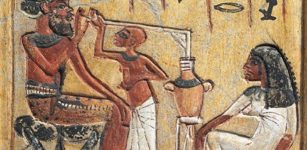 5,000 Years Old Beer Enjoyed By Egyptian Pharaohs Recreated
Archaeology | May 23, 2019
5,000 Years Old Beer Enjoyed By Egyptian Pharaohs Recreated
Archaeology | May 23, 2019 -
 Fascinating Discovery – First Female Viking Grave Discovered In Swedish Mountains
Archaeology | Aug 20, 2022
Fascinating Discovery – First Female Viking Grave Discovered In Swedish Mountains
Archaeology | Aug 20, 2022 -
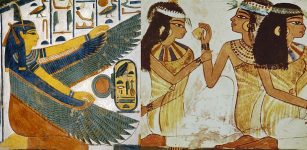 Ancient Egyptian Women Had Equal Rights As Men – Egyptian Cosmology And Goddess Maat Reveal Why
Ancient History Facts | Dec 18, 2017
Ancient Egyptian Women Had Equal Rights As Men – Egyptian Cosmology And Goddess Maat Reveal Why
Ancient History Facts | Dec 18, 2017 -
 On This Day In History: Michael Servetus Burned At The Stake ‘Atop A Pyre Of His Own Books’ – On Oct 27, 1553
News | Oct 26, 2016
On This Day In History: Michael Servetus Burned At The Stake ‘Atop A Pyre Of His Own Books’ – On Oct 27, 1553
News | Oct 26, 2016 -
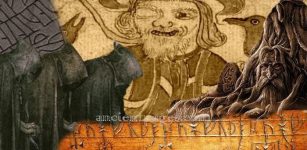 God Of The Gallows And How Odin Hanged Himself From Yggdrasil To Know Secrets Of Runes
Featured Stories | May 7, 2018
God Of The Gallows And How Odin Hanged Himself From Yggdrasil To Know Secrets Of Runes
Featured Stories | May 7, 2018 -
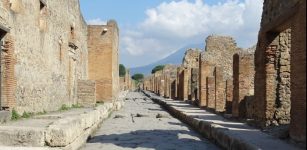 Why Did Ancient Romans Build So Many Straight Roads?
Ancient History Facts | Aug 9, 2017
Why Did Ancient Romans Build So Many Straight Roads?
Ancient History Facts | Aug 9, 2017 -
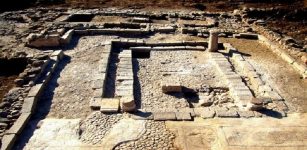 2,000-Year-Old Ruins In Mary Magdalene’s Town Of Magdala On The Shore Of The Sea Of Galilee
Biblical Mysteries | Dec 26, 2014
2,000-Year-Old Ruins In Mary Magdalene’s Town Of Magdala On The Shore Of The Sea Of Galilee
Biblical Mysteries | Dec 26, 2014 -
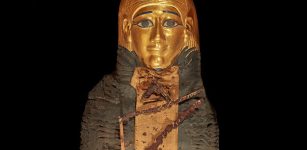 Egyptian ‘Golden Boy’ Mummy Was Protected By 49 Precious Amulets On His Journey To The Afterlife – CT Scans Reveal
Archaeology | Jan 24, 2023
Egyptian ‘Golden Boy’ Mummy Was Protected By 49 Precious Amulets On His Journey To The Afterlife – CT Scans Reveal
Archaeology | Jan 24, 2023 -
 Remains Of Medieval Port Discovered In Eindhoven
Archaeology | Nov 17, 2020
Remains Of Medieval Port Discovered In Eindhoven
Archaeology | Nov 17, 2020 -
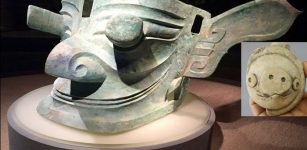 Old Clay Pig Figurine And A 5,000-Year-Old Settlement Found Near Mysterious Sanxingdui Ruins, China
Archaeology | Jul 30, 2020
Old Clay Pig Figurine And A 5,000-Year-Old Settlement Found Near Mysterious Sanxingdui Ruins, China
Archaeology | Jul 30, 2020 -
 Hel – Loki’s Terrible Daughter And Goddess Of The Land Of Dead
Featured Stories | Mar 26, 2018
Hel – Loki’s Terrible Daughter And Goddess Of The Land Of Dead
Featured Stories | Mar 26, 2018 -
 Goddess Huitaca – Moon Goddess Of Intoxication, Joyful Life And Unlimited Pleasures In Muisca Mythology
Featured Stories | Mar 14, 2021
Goddess Huitaca – Moon Goddess Of Intoxication, Joyful Life And Unlimited Pleasures In Muisca Mythology
Featured Stories | Mar 14, 2021 -
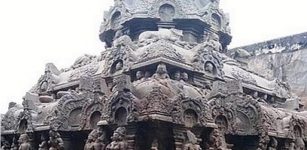 Vettuvan Koil Temple Spectacular Monolith Dedicated To Lord Shiva And Built By Pandya Dynasty
Featured Stories | May 25, 2021
Vettuvan Koil Temple Spectacular Monolith Dedicated To Lord Shiva And Built By Pandya Dynasty
Featured Stories | May 25, 2021 -
 Likho (Licho): Puzzling And Persistent Demon Of Mischief In Slavic Mythology
Featured Stories | Dec 18, 2016
Likho (Licho): Puzzling And Persistent Demon Of Mischief In Slavic Mythology
Featured Stories | Dec 18, 2016 -
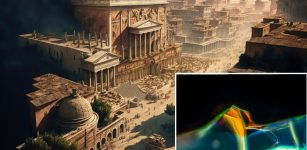 Buried Ancient Roman Glass Has Formed Photonic Crystals – Extraordinary Discovery – Scientists Say
Ancient Technology | Sep 25, 2023
Buried Ancient Roman Glass Has Formed Photonic Crystals – Extraordinary Discovery – Scientists Say
Ancient Technology | Sep 25, 2023 -
 Secret Ancient Knowledge Of Venus – Controversial Theory And Surprising Discovery – Part 1
Ancient Mysteries | Jun 30, 2018
Secret Ancient Knowledge Of Venus – Controversial Theory And Surprising Discovery – Part 1
Ancient Mysteries | Jun 30, 2018 -
 Huge Mass Grave With Remains Of Pirate Black Sam’s Crew Discovered In North America
Archaeology | Apr 3, 2018
Huge Mass Grave With Remains Of Pirate Black Sam’s Crew Discovered In North America
Archaeology | Apr 3, 2018 -
 Rare Viking Artifacts Hidden Beneath The Ice Discovered By Archaeologists In Norway
Archaeology | Feb 6, 2021
Rare Viking Artifacts Hidden Beneath The Ice Discovered By Archaeologists In Norway
Archaeology | Feb 6, 2021 -
 Why Is Africa Called Africa?
Ancient History Facts | Dec 1, 2020
Why Is Africa Called Africa?
Ancient History Facts | Dec 1, 2020




